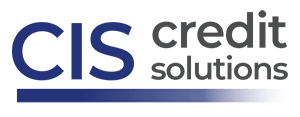There is a world of data out there – so much, in fact, that it can be hard to know how and when to use it. You’ve no doubt heard the term “big data.” It’s quite the buzzword these days. But what is it exactly and how can you take buzz advantage of it?
What exactly is big data?
The Oxford Dictionary defines big data as “extremely large data sets that may be analyzed computationally to reveal patterns, trends, and associations, especially relating to human behavior and interactions.”
But the days of only big companies accessing and using big data are long gone. Big data is now available to lenders of all sizes through the use of a hosted platform that leverages all the latest analytical technologies – Saas, Python, Studio, etc. – and you don’t need to speak IT to analyze the data on your own. You can leverage the same consumer data set that the very big lenders do in a depersonalized fashion (meaning you cannot see specific consumer names) to do modeling for your business.
First, it’s important to understand that non-FCRA data is being used to create these models. However, you can take a model that you develop for a mortgage or refinance offer and with a couple of keystrokes, migrate and apply it to an actual marketing program. As you know, in order to send an offer of credit to someone it must meet FCRA requirements. Although the Mortgage Lead Generation Models are non-FCRA, they can be used as “Pre-Selects” and taken as input into a FCRA “Prescreen” marketing campaign to allow you to make a Firm Offer of Credit, if desired.
How is this data commonly used?
Here are a few ways big data can be used by lenders today:
- Inferencing – When you have created an offer for an audience that needs a particular loan program, today’s data and technology allow you to see what happened to those who didn’t accept the offer. Did they go somewhere else? You can also determine what would have happened if you dropped the credit score on the program by 10 points – how many more people would have been eligible and what would have been your incremental risk.
- Benchmarking – The data and technology currently available lets you see how you are performing against your competitors. Do you have greater market share on the West Coast than they do? Are they having more success than you are on the East Coast? Armed with this knowledge, you can then turn your benchmarking models into programs.
- Predictive Lead Generation – These models enable lenders to better identify prospects earlier in the mortgage cycle. In fact, the most highly predictive models identify the likelihood that a lead will open a mortgage within the next two to six months. And they are typically segmented based on the consumer’s profile: first time home buyer, new purchase, refinance, and home equity loan. The following are six examples of lead generation models:
- New Borrower Acquisition – Use mortgage lead generation models to identify consumers most likely to open a new residential loan within the next 2-6 months. Create targeted Invitation-To-Apply marketing campaigns with higher response rates and better ROI on your marketing spend. You can refine your marketing prospect list even further by appending property data to target move-up buyers within a specific value range, with a threshold collateral to loan value, or customers of a specific mortgage lender.
- Customer Retention – Expand your predictive insights with mortgage lead generation models that identify customer propensity for new purchase, home equity, and refi transactions.
- Disaster Risk Assessment – Map properties using x and y coordinates to create visualizations. Add Automated Valuation Model (AVM) and lien data to help assess risk within your portfolio associated with unforeseen events by understanding the borrower’s collateral position.
- Identify and Mitigate Delinquency Risk – Append lien data to identify other mortgage liens on properties within your portfolio. Add lien data collateral to loan value calculations and homeowner/non-homeowner flags for additional insights.
- Home Equity Lending – Add AVM and lien data collateral to loan value calculations to identify consumers with equity to support a home equity loan. Add a mortgage lead generation model to target consumers most likely to apply for a home equity loan.
- Regulatory Reporting – Use AVM for updating collateral value for individual loans. Add lien data to compute Loan To Value and Collateral To Value for reporting. The AVM confidence score may be used to ensure that valuable capital isn’t unnecessarily sidelined due to valuation inaccuracies.
- Aggregated credit data –This information helps businesses gain critical insight on credit use by offering a suite of tools to differential households based on their likely credit availability, needs and usage. Because it is not subject to FCRA regulations, this data can be used throughout the entire lifecycle to enhance prospecting, targeting, and account management.
If you’re interested in using big data and available technologies to better understand your portfolio, improve your marketing efforts and increase your ROI, contact your Xactus Account Executive today.






